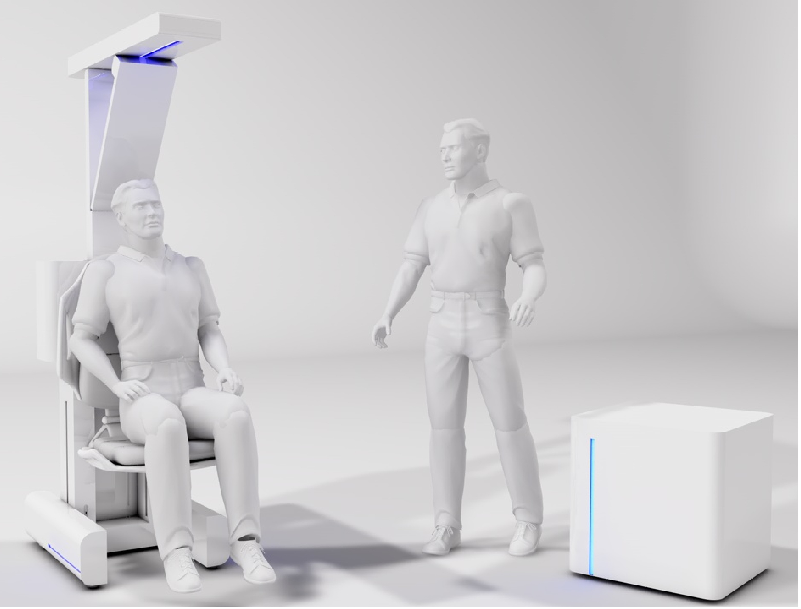Demographic change and ageing societies can be identified as potential drivers for the implementation of pervasive technologies in our environment. Computers and Microsystems have become smaller and cheaper and become a part of our life and society. Wearable Robots, advanced prosthetics and sensor implants even aim at making human beings part of those developing cyber environments. This integration of robotic systems and sub-systems is likely to transform the appearance of our environment and everyday artifacts similar as done through the implementation of new materials as steel or plastics once before.
Towards Assistive Environments
Better medicinal and health facilities are extending the life expectancies all around the world. The double demographic change being experienced in many developed countries demand for more life support system and other assistance technologies. Meanwhile the advancements in pervasive technology have made computers much smaller thereby making it possible to embed them into everyday objects. Pervasive Technology becomes a part of our life and society. Wearable Robots, advanced prosthetics and sensor implants even aim at making human beings part of the developing assistive cyber environment. As envisioned by Shirow Masamune’s Manga classic “Ghost in the shell” the borders between man and advanced technologies shrink creating a 2029 Cyber Society. Although it is not our main research aim, interesting relations between science fiction and science fact have been discussed in several research publications. However, we think that the integration of pervasive technology obviously becoming our 4th cultural technology is a highly interdisciplinary task, challenging the next generation of engineers from various backgrounds.
Demographic Change as Driver for the Development of assistive Technology
The demographic statistics on show that the percentage of people above 65 years is raising all around the world and Japan is expected to have 37% of its population above 65 years by 2050. Traditionally Japan’s Shinto Religion values the elderly with great respect and care for the elderly is usually provided at home by the family members. Like in EU countries placing the elders at a nursing or an elderly home at an old age is not considered ideal in Japan. The current double demographic change makes home care highly impractical. Hence there is a high demand for technological aids for the continued home care of the elderly. The concept of life support systems and assistance technologies based on those ideas exists since the 1980’s. This field of assistance technologies has improved vastly in the recent years ranging from ubiquitous health monitoring systems to robotic systems. Apart from these, ubiquitous technologies embedded across the urban fabric can extend the support for the elderly even outside the homes and into the city public spaces and thereby making environments more accessible and inclusive for an ageing society. All in all, demographic change and ageing societies can be identified as potential drivers for the development and implementation of pervasive technologies into our environment.
Robotic Care Environments and Mechatronic Furniture
In the future technological complexity will be shifted from the care robot to the environment and distributed among various intelligent subsystems. The future care robot supporting care helpers or people in need thus will be complementary part of an intelligent care environment and sensors and actuators attached to doors, furniture, ceiling and so on enable the environment to support and take over robotic tasks. The future care robot has the capability to cooperate with various subsystem components in its’ surrounding melting robot and environment to an integrated and efficiently working entity. Mechatronics systems, downscaled motors and lifting systems, integrated sensors and acorns in combination with new technologies for human-machine-interaction can be accounted as sub-systems of immobile robotic systems. When such sub-systems are integrated and merged with everyday artifacts as furniture, appliances and whole buildings, those artifacts tend to change both functionality and appearance. Emerging technologies are not only transforming functionality but also designs and forms of our environment following the principle of “form follows function” (Sullivan, 1896) being discovered and scientifically explained by L. Sullivan already more than one hundred years before. The integration of robotic systems and sub-systems is likely to transform the appearance of our environment and everyday artifacts similar as done through the implementation of new materials as steel or plastics once before.

- Figure: Visualization and layout of robotic nursing station supporting caregivers’ tasks. In the future, technological complexity will be shifted from the care robot to the environment and distributed among various intelligent subsystems. Furthermore, caregiver and robots will form entity incorporation the advantages of both human beings and robotic systems.
New Master Course at Technische Universität München
The Faculty of Architecture at TUM recently established the new Master of Science course in “Advanced Construction and Building Technology”, starting with the winter term 2011/12. The master course will be hosting international students from various disciplines, such as architecture, civil engineering, mechanical engineering, electrical engineering, computer science, economics, medicine, and others. The topics of this course aim at expanding the professional core competence in construction while responding to changing technological, social and ecological circumstances. The integration of intelligent and robotic systems in daily life and environments and health care scenarios are core topics in this master course (further information: www.br2.ar.tum.de).
Prof.Prof.h.c./SRSTU, Dr.-Ing./Univ.Tokio
LS fuer Baurealisierung und Baurobotik TU Muenchen
Arcisstrasse 21 D 80333 Muenchen Germany
Fon: +49 89 2892 2100 office room 4111
Cel: +49 16 2138 2830
Fax: +49 89 2892 2102 office
Fon: +49 89 2892 2482 BauRobotikLabor 0710
Fax: +49 89 2892 2163 BauRobotikLabor 0710
http://www.br2.ar.tum.de
 Constructionshows
Constructionshows